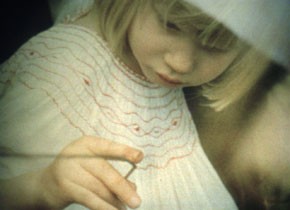In Person:
Ute Aurand
March 6 and 7, 2013
"Poems of light," is how Ute Aurand once characterized the works of those filmmakers who inspired her – and it also the best description of her own aesthetic. Like the films of Robert Beavers, Jonas Mekas, Marie Menken or Margaret Tait, Aurand’s oeuvre is in search of that fragile form of poetry which the medium of 16mm film enables in a particular way. The Austrian Film Museum pays tribute to the artist, born in Frankfurt in 1957, with two survey programs compiled from her approximately 30 years of work.
It is not by chance that one of her early films, OH! die vier Jahreszeiten (co-directed with Ulrike Pfeiffer), begins with a classic quote from Jonas Mekas: "Improvisation is the highest form of concentration, of awareness, of intuitive knowledge." It is a vector that leads directly into the heart of matter. Even in her earliest films, in which the viewer is clearly aware of what was planned and worked out, one can sense a real immediacy in Aurand's use of the camera (often doubling as the main tool of editing), and it would exert an ever-stronger presence as her work developed.
Whether personal diaries (Terzen 1), portraits of people close to her (godchildren in Paulina and Franz, her parents in Kopfüber im Geäst, fellow artists in Maria, Susan and Lisbeth), or "cine-architecture" dedicated to the creation of buildings (the two museums in In die Erde gebaut and Filmmuseum Aufbau 2000) – Aurand's films are always improvised miniatures of time, assembled from images captured over days, months, and years. Despite their focus on duration and compression, they avoid any pacifying dramatical arc. Reveling in gestures and appearances of the moment, these films breathe pure cinema: the urge to re-present, with maximum camera-eye attention, a presence that is now past.
Ute Aurand will be available for discussion with the audience at both screenings.
Related materials
Photos 2013 - In person: Ute Aurand


